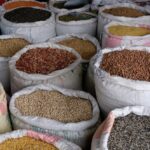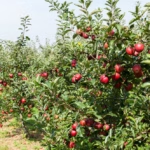Foot rot is a common and highly contagious bacterial infection affecting livestock, particularly cattle, sheep, and goats. It can cause lameness, discomfort, and decreased productivity if left untreated. Recognizing the signs of foot rot early and implementing appropriate treatment measures are essential for minimizing its impact on animal welfare and farm profitability. Here’s a comprehensive guide on how to identify and treat foot rot in livestock:
Identifying Foot Rot:
- Lameness: One of the primary signs of foot rot is lameness, which may vary in severity from mild limping to complete reluctance to bear weight on the affected limb.
- Swelling and Inflammation: Infected animals may exhibit swelling and inflammation around the hoof, particularly in the interdigital space (the area between the claws or digits).
- Foul Odor: Foot rot is often accompanied by a distinctive foul odor emanating from the infected area due to the presence of necrotic tissue and bacterial proliferation.
- Separation of Hoof Walls: In advanced cases, the hoof walls may begin to separate, exposing underlying tissue and creating an ideal environment for bacterial growth.
- Behavioral Changes: Affected animals may display changes in behavior, such as decreased appetite, reluctance to move, or spending more time lying down to alleviate discomfort.
Treating Foot Rot:
- Isolation and Quarantine: Infected animals should be promptly isolated from the rest of the herd or flock to prevent the spread of the infection. Quarantine measures help contain the disease and facilitate targeted treatment.
- Hoof Trimming: Trimming overgrown hooves and removing necrotic tissue are essential steps in managing foot rot. This helps improve hygiene and allows topical treatments to penetrate affected areas more effectively.
- Topical Antiseptic Solutions: Applying topical antiseptic solutions or foot baths containing antibacterial agents such as iodine, copper sulfate, or zinc sulfate can help control bacterial growth and promote healing.
- Systemic Antibiotics: In severe cases or when topical treatments alone are insufficient, systemic antibiotics may be necessary to combat the underlying bacterial infection. Consultation with a veterinarian is recommended to determine the appropriate antibiotic and dosage regimen.
- Pain Management: Providing pain relief medications, such as non-steroidal anti-inflammatory drugs (NSAIDs), can alleviate discomfort and improve the animal’s welfare during the recovery period.
- Environmental Management: Maintaining clean and dry living conditions is crucial for preventing the recurrence of foot rot. Regular removal of manure and bedding, as well as improving drainage in wet areas, helps reduce the risk of reinfection.
- Vaccination: Some livestock producers may choose to vaccinate their animals against foot rot to prevent outbreaks and reduce the severity of infections. Vaccination protocols should be discussed with a veterinarian and tailored to the specific needs of the herd or flock.
- Monitoring and Follow-Up: After initiating treatment, regular monitoring of affected animals is necessary to assess their response and ensure complete resolution of the infection. Follow-up hoof inspections and adjustments to treatment protocols may be required based on individual animal responses.
Preventing Foot Rot:
- Good Husbandry Practices: Implementing sound husbandry practices, such as regular hoof trimming, maintaining clean living conditions, and avoiding overcrowding, can help reduce the risk of foot rot.
- Quarantine and Biosecurity: Introducing new animals into the herd or flock should be done cautiously, with proper quarantine measures in place to prevent the introduction of infectious diseases like foot rot.
- Nutritional Management: Ensuring animals receive a balanced diet rich in essential nutrients supports overall health and resilience to infections, including foot rot.
- Regular Monitoring: Routinely inspecting animals’ hooves for signs of injury, overgrowth, or infection allows for early detection and intervention, minimizing the spread of foot rot within the herd or flock.
By understanding the signs of foot rot, implementing timely treatment measures, and adopting preventive strategies, livestock producers can effectively manage this challenging condition and maintain the health and well-being of their animals. Collaboration with a veterinarian is essential for developing comprehensive foot rot management plans tailored to specific herd or flock requirements, ultimately ensuring optimal outcomes for both animals and farm operations.









